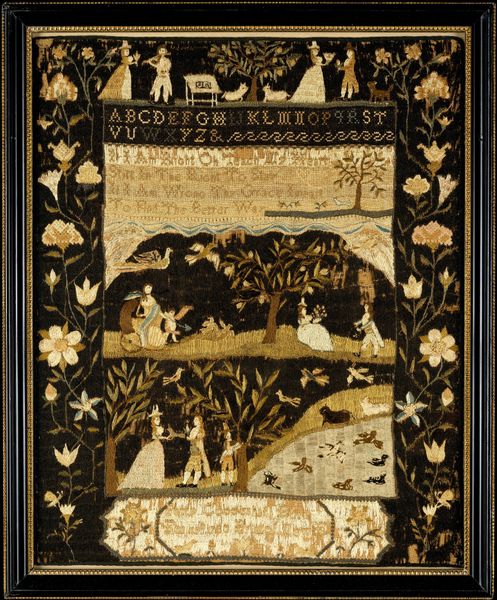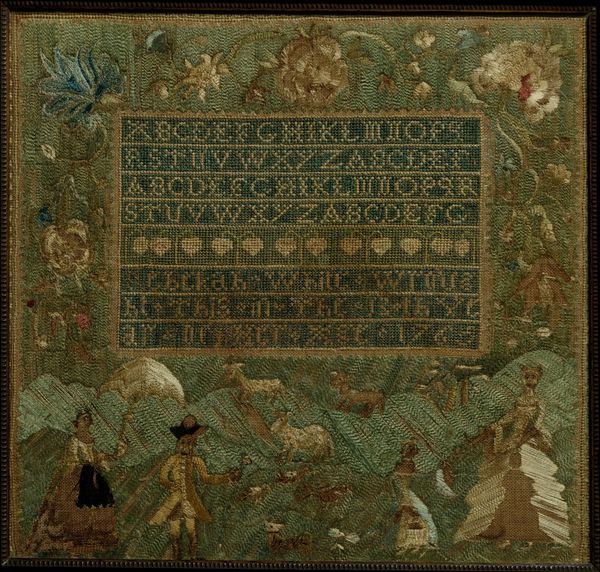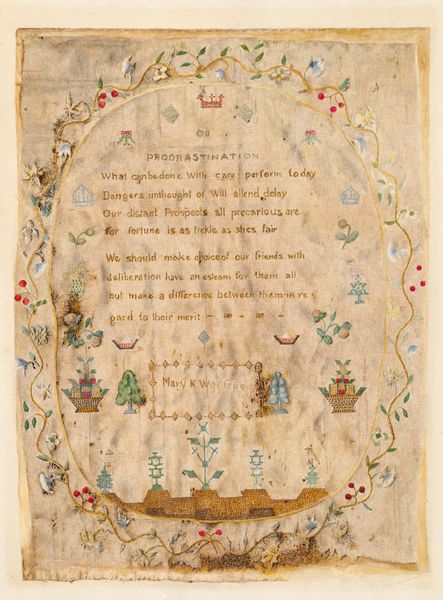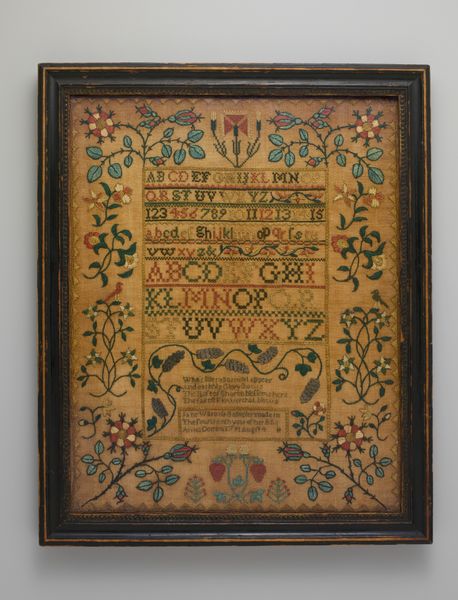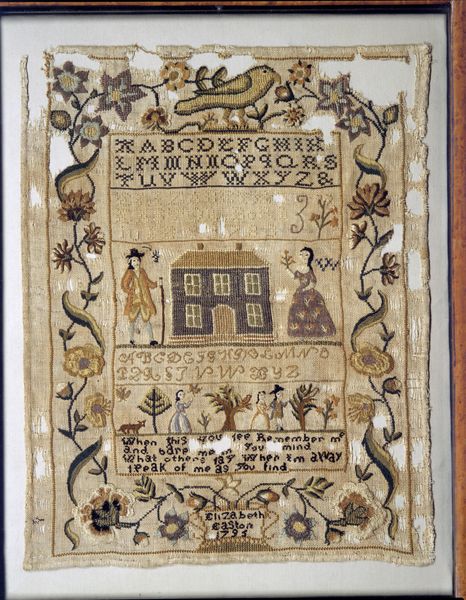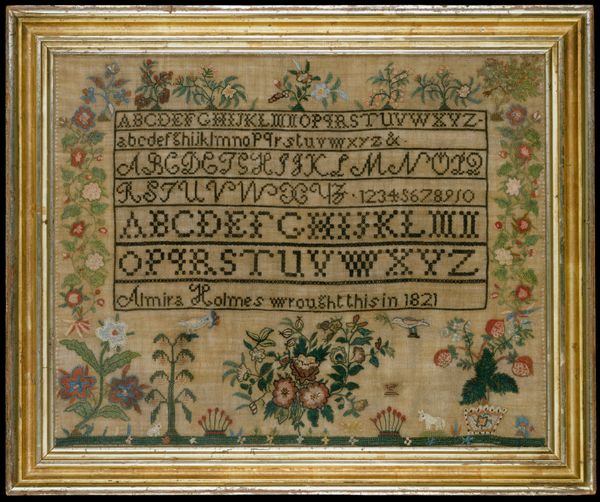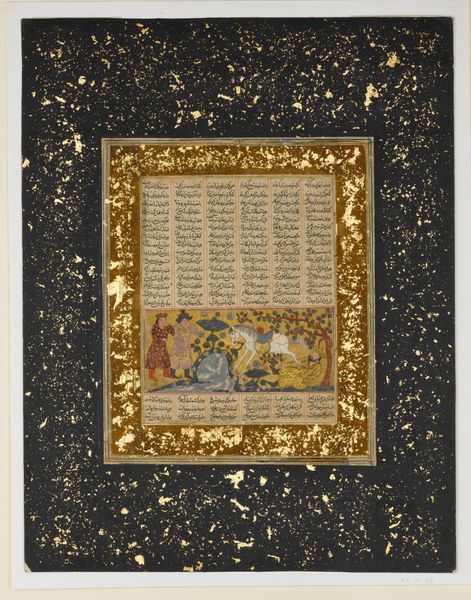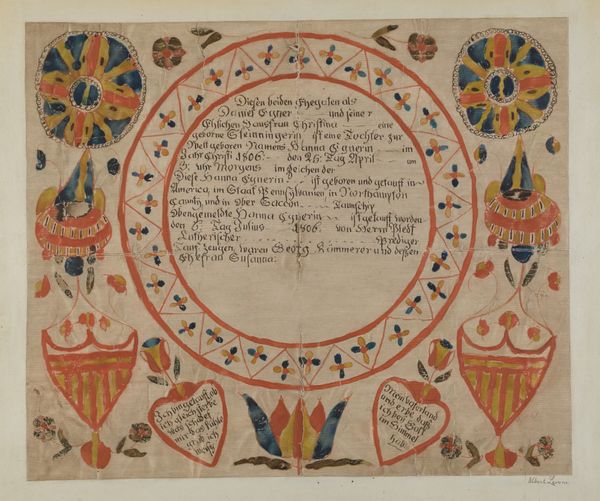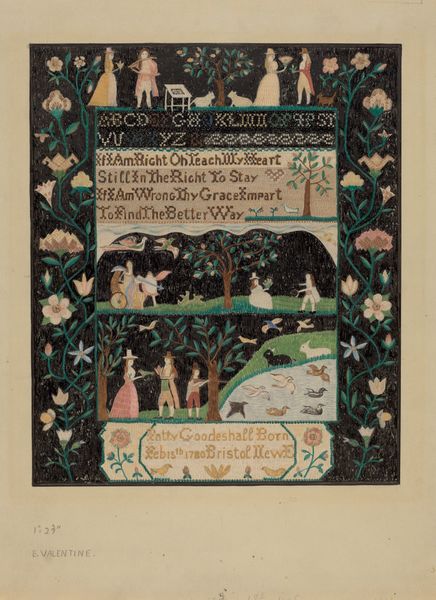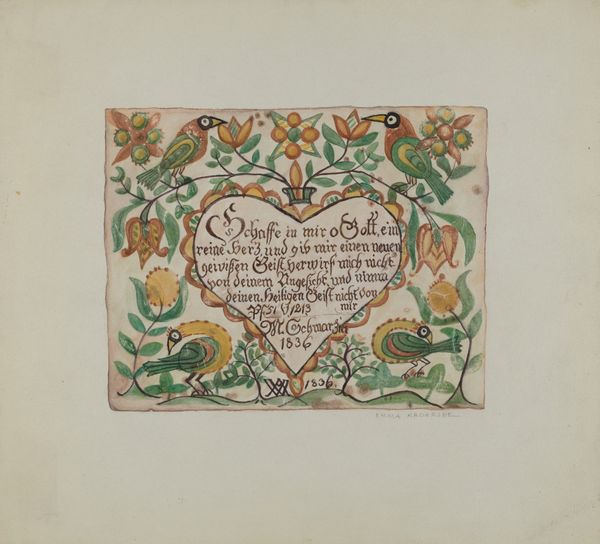
drawing, fibre-art, weaving, textile
#
portrait
#
drawing
#
fibre-art
#
narrative-art
#
animal
#
weaving
#
textile
#
flower
#
folk-art
#
romanticism
#
united-states
#
genre-painting
#
miniature
Dimensions: 15 3/4 x 11 3/4 in. (40 x 29.8 cm)
Copyright: Public Domain
Curator: This is Rebekah S. Munro’s embroidered sampler, dating between 1788 and 1791. What strikes you about it? Editor: Well, it's textile art, which is fairly unusual for this time, isn't it? The overall effect feels so meticulously crafted and quaint, like peering into a miniature, idealized world. How do we interpret all the little scenes and verses stitched into it? Curator: These samplers are fascinating cultural objects. Think of them as visual poems, encoded with meaning. Consider the central figures, perhaps a young couple, surrounded by nature. What does this imagery evoke for you? Editor: A sense of innocence, maybe? It feels very domestic and sentimental. What about the phrases? Are they religious? Curator: Partially. The phrases serve to communicate values: industry, piety, filial duty. Notice the emphasis on education ("The Book, the Needle and the Pen divide"). Embroidery itself was a form of education for young women, wasn't it? This artwork serves to remind us how important it was to instill proper virtues. What do the other symbols, such as the flowers and animals, signify to you? Editor: The flowers suggest beauty and perhaps fragility, while the animals evoke a sense of harmony with nature. It's interesting to think about this sampler as a cultural record and moral compass all in one. Curator: Precisely. This piece really showcases how everyday images gain cultural and symbolic weight across time, helping to define social ideals. It connects us to a shared history and what they valued then. Editor: I agree. I initially just saw a pretty embroidered piece, but now I see a rich tapestry of cultural and moral messaging. Thank you for sharing.
Comments
No comments
Be the first to comment and join the conversation on the ultimate creative platform.


